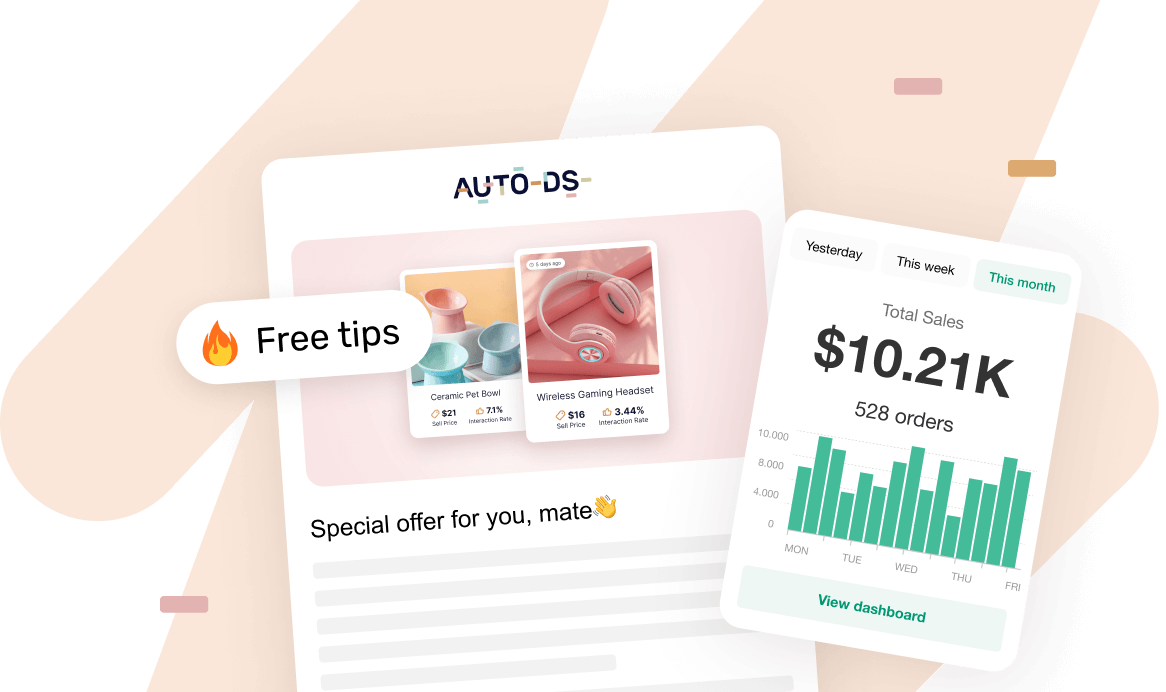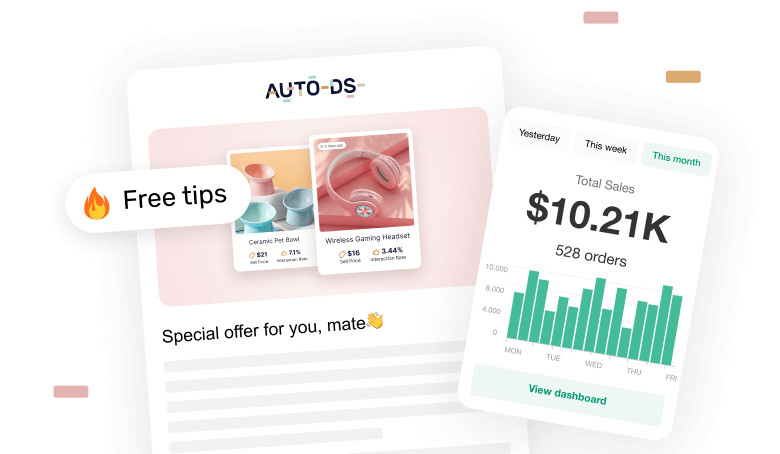The question everyone has: Is dropshipping legal? Let’s get this out of the way: yes, dropshipping is 100% legit. But like any online business model, it all depends on how you do it.
You know, there are copyright issues, shady suppliers, confusing rules, long lists of prohibited items, and plenty of grey areas that make beginners nervous. With so many scams and false promises going around the internet, it’s easy to see why one might wonder how legit dropshipping is.
If you’re wondering what you can or cannot do, no worries. In this guide, we’ll clear up the confusion and break down everything you need to know about running a 100% legal and legitimate dropshipping business.
Plus, we’ll show you how automation tools help you comply with requirements and regulations. For instance, AutoDS keeps your dropshipping operations legit and compliant with vetted suppliers, automated fulfillment, and automatic order tracking.
Dropshipping is legal, as long as you follow local laws, pay taxes, and source from verified sources.
Platform compliance matters as well. Each marketplace, like Amazon, eBay, Etsy, or Shopify, has its own rules. Ignoring them can get your account suspended, so it’s always best to know their dropshipping policies.
Scams aren’t the norm. Fake “get rich quick” schemes and shady suppliers give dropshipping a bad name. But it doesn’t represent dropshipping, which is a legit, ethical business model.
It all comes down to transparency. Clear shipping information, available refund policies, and honest listings build trust and align with most dropshipping policies and rules.
Automation keeps you safe. Tools like AutoDS help you stay compliant by syncing inventory, tracking orders, and sourcing from trusted suppliers.
Understanding Dropshipping Legality
Before we get into the specifics of dropshipping legality, let’s clear something up. Dropshipping isn’t a shady business model. It’s a globally recognized way to run an online store. Moreover, it’s a model that benefits everyone in the supply chain.
First, it gives more exposure to manufacturers and suppliers. Second, it opens doors for small business owners who can start selling without a huge upfront investment. And third, it encourages competition, benefiting customers who get access to a wider variety of products.
What causes confusion is how differently it can be executed. Some sellers run legitimate, transparent stores. Others, instead, just take a shady road. Let’s dive deeper into this.
Want to skip the headaches of compliance issues? Let automation do it for you. AutoDS connects you to vetted suppliers, automates fulfillment, provides tracking numbers, and more to make sure you’re running a legitimate business 👉 Start $1 trial today!
What Does “Legal” Dropshipping Mean?
In basic terms, a legal dropshipping business is one that operates transparently. What does this mean, exactly? It usually comes down to a few general principles:
- Follows local laws.
- Pays taxes and has a verified business.
- Respects intellectual property rights.
- Operates transparently with customers and suppliers.
- Follows each selling channel’s dropshipping policies.
In other words, it’s a business that doesn’t hide anything. It simply facilitates sales between buyers and suppliers in a way that’s honest, organized, and responsible.
Transparency is key here. You must clearly describe your products, set accurate shipping times, and fulfill orders as promised. Misleading buyers can turn your business from legitimate to deceptive in seconds.
For example, claiming next-day delivery when the item takes three weeks to arrive is a huge deal breaker. A lawful dropshipping setup makes sure customers know what they’re buying, who it’s from, and when to expect it.
Why People Think Dropshipping Is “Illegal”
While dropshipping is totally legitimate, the truth is it has a bad rep. Some people associate it with scams, bad quality products, or influencers promising that dropshipping can make you a millionaire in days. And while those stories exist (just like they do in every business), they don’t represent how dropshipping actually works.
Many of the illegal claims come from poor customer experiences. Fake branding, inflated prices, delayed shipping, or sellers vanishing after taking payments. These are unethical behaviours that break all the dropshipping policies. But they are not crimes inherent to the business itself.
Legal dropshipping is simply about following the rules. Being transparent, compliant, and customer-focused. Ultimately, dropshipping is not about tricking people. It’s about running a real business that happens to be fully online.
The Legal Foundations of Dropshipping
If you want to run a legit dropshipping business, you’ll need to understand the legal basics behind it. Don’t worry, you don’t need a law degree. But you do need to set up your business structure correctly, handle taxes responsibly, and follow consumer protection rules.
Think of this section as the “adulting” of dropshipping. Not fun, but absolutely necessary if you want your store to survive long-term.
Business Registration and Licensing
First things first. Your dropshipping store is a real business. That means you should register it like one. Depending on where you live, you can operate as a sole proprietorship or form an LLC (Limited Liability Company). Let’s break them down quickly:
- Sole proprietorship: you and your business are legally the same entity. Therefore, you report your business income on your personal tax return. The good part? It’s super simple to set up and has fewer costs. The downside? You have no liability protection. If your business gets sued or goes into debt, your personal things (like your car) can be at risk. All in all, it’s best for beginners or side hustlers.
- LLC (Limited Liability Company): Your business is a separate legal entity from you. This is a bit more complex to set up and more expensive, as there are annual fees. That said, it comes with benefits. First, it protects your personal assets if something goes wrong. Second, it offers tax flexibility and looks more professional to suppliers and banks. It’s best for established dropshippers or anyone planning to scale.
If you’re outside of the US, these are probably different. But no worries: most countries have similar setups. They just have different names.
Also, if you’re in the US, you’ll likely need an EIN (Employer Identification Number) for tax purposes. In other countries, this might be called a business ID or tax number. Some regions also require a business license to sell goods online.
Tax Compliance (Sales Tax & VAT)
Ah, taxes. Everyone’s favorite topic. It doesn’t matter if you’re selling sneakers or cat mugs… tax laws still apply when dropshipping.
In the US, sales tax depends on where your business has a nexus (aka, a physical or economic presence). Each state has its own rules, so you might need to collect and remit sales tax in multiple states.
In Europe and the UK, things work a little differently. You’ll need to register for VAT (Value Added Tax) once you hit a certain sales threshold, and charge customers accordingly based on their location.
But it’s not all bad news. You don’t have to do all the math yourself. Tools like TaxJar can automate US sales tax management. Then, dropshipping tools like AutoDS integrate directly with your selling channels to handle price adjustments and data sync across platforms. Because it’s not like sellers start dropshipping to become an accountant…
Consumer Protection Laws
Here’s where legality meets customer experience. Consumer protection laws make sure buyers aren’t misled or mistreated. The basics: you must be clear with shipping times, provide accurate product descriptions, and handle refunds and returns easily.
Each country has its own customer protection institutions. These include specific guidelines that sellers must comply with. Mostly, they cover advertising honesty, return policies, and customer data protection. For example:
- FTC (Federal Trade Commission) in the USA.
- CMA (Competition and Markets Authority) in the UK.
- European Consumer Centres Network (ECC-Net) in the EU.
- ACCC (Australian Competition and Consumer Commission) in Australia.
But it doesn’t stop there. There are also specific platform requirements. Selling channels like Amazon, eBay, Shopify, and Facebook have strict standards on returns, fulfillment, customer support, and product quality.
Bottom line? Keep your customers informed, your taxes organized, and your business registered. It’s the magic recipe for dropshipping legally and ethically.
Platform Rules and Policies
Even if dropshipping is legal in general, each e-commerce platform has its own specific rules. Ignoring them can get your account suspended or affect your seller metrics. Let’s zoom in on some specific selling channels.
Is Dropshipping Legal on eBay?
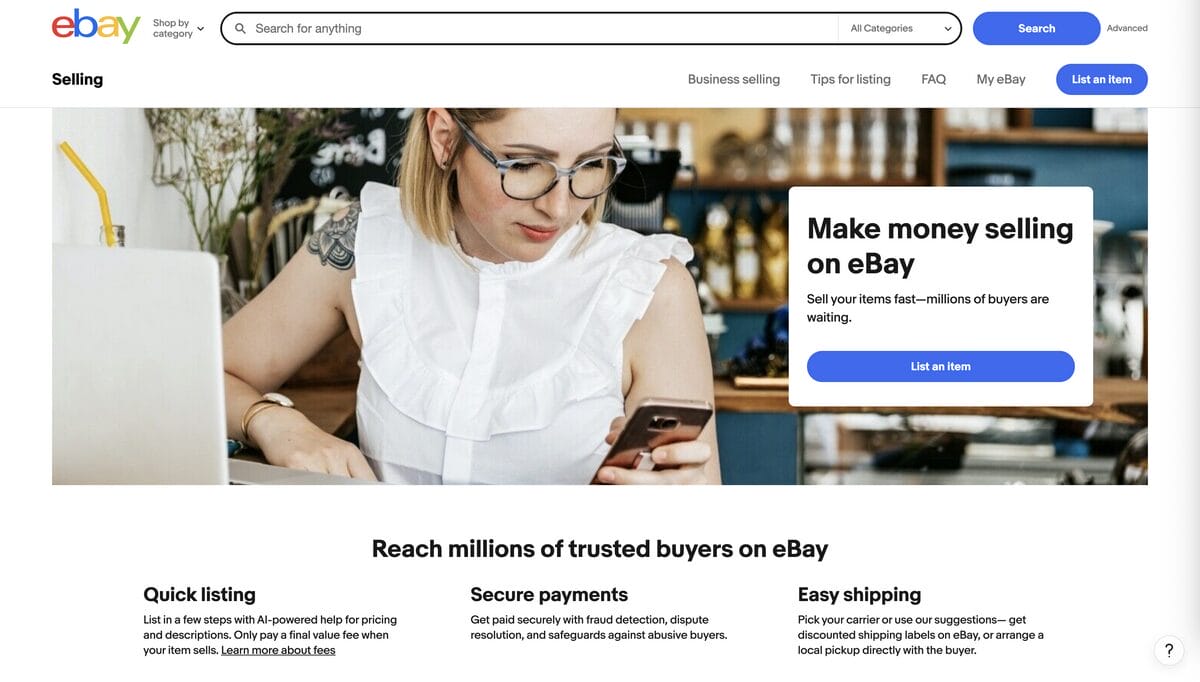
Yes, dropshipping is totally legal and allowed on eBay. That said, the eBay dropshipping policy comes with some rules. The most important one is this: you can only dropship products from wholesale suppliers. This means you can’t dropship from other retailers or marketplaces like Amazon, Walmart, or AliExpress.
In simple terms? Buying a product from, let’s say, Amazon, and shipping it directly to an eBay customer is retail arbitrage, which doesn’t comply with dropshipping. eBay wants you to act like an actual seller, not someone exchanging listings across platforms.
Other requirements include the basics of e-commerce. You know, making sure the buyer receives the item on time and taking full responsibility for returns, customer service, and order tracking.
Is Dropshipping Legal on Amazon?
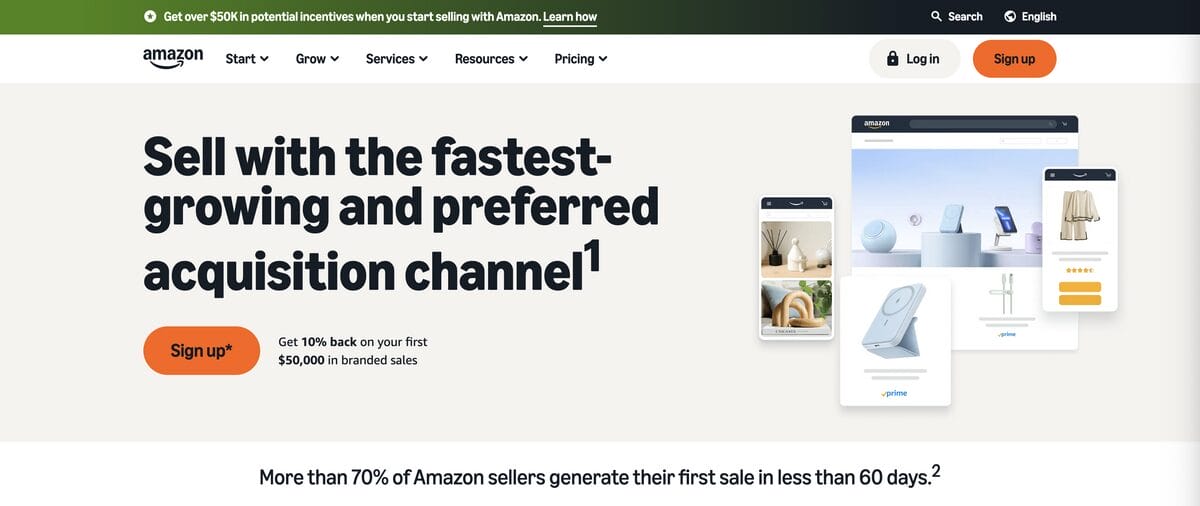
Amazon also allows dropshipping, but it’s even more strict than eBay when it comes to setting rules and regulations.
The Amazon dropshipping policy states that you, the dropshipper, must be the seller of record. This means your name (not your supplier’s) appears on invoices, receipts, and packaging. To do this, you have to partner with suppliers who can either provide neutral packaging and invoices or those who offer white-labeling services.
What Amazon doesn’t allow is retail arbitrage. Again, this means you buy from another retailer (like Walmart or Target) and ship directly to your buyer. Doing so can result in your account being suspended or, worse, permanently banned.
Want to stay fully compliant? It’s all about picking the right suppliers. Source products from verified wholesalers or platforms like the AutoDS Marketplace (it only lists approved suppliers that meet Amazon’s standards).
Is Dropshipping Legal on Shopify, Etsy, and Walmart?
All in all, dropshipping is legal everywhere. But it all comes down to how you do it, as each platform has its own requirements. In any case, they all have a few things in common.
First, you’re responsible for what you sell. Second, they have pretty much the same prohibited items, from counterfeit products to branded goods, weapons, adult content, and more. And third, they don’t allow misleading branding or misinformation.
Let’s see how each platform stands on dropshipping:
1. Shopify

It fully allows dropshipping. To do it, you must comply with all consumer laws and supplier regulations. Avoid using copyrighted images, counterfeit items, or misleading branding (for example, pretending your store creates the products itself).
2. Etsy
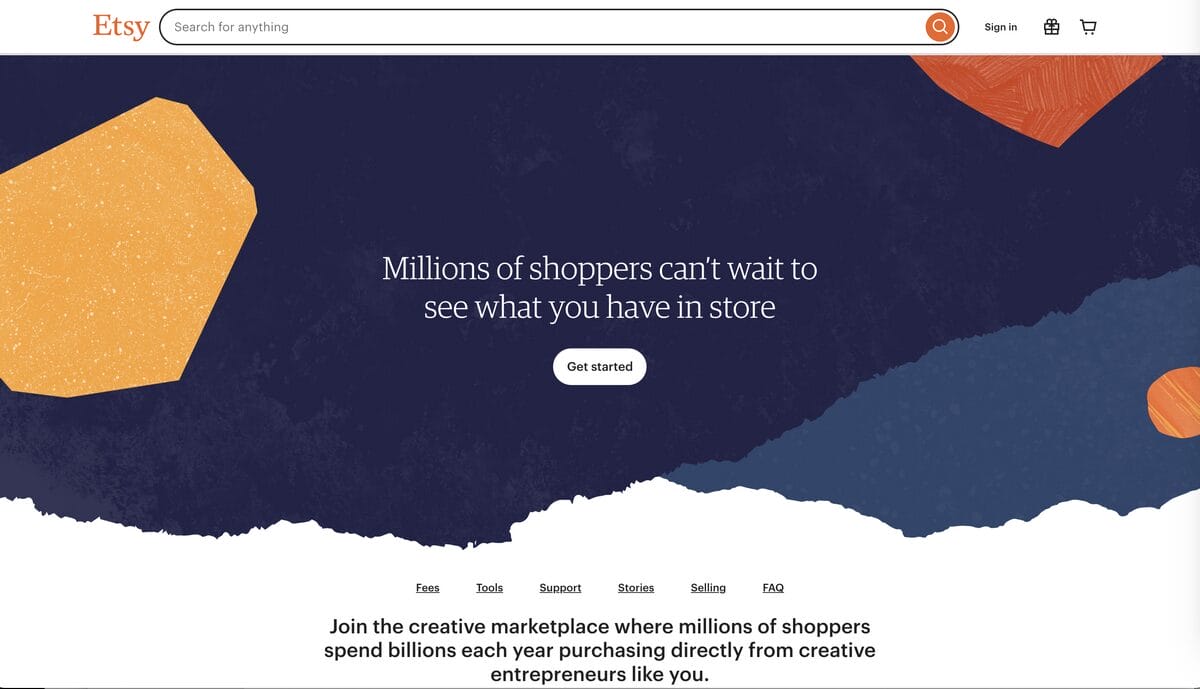
This one is a bit special. Dropshipping is allowed, both from and on Etsy. But if you’re going to be selling on this channel, products must be handmade, custom-designed, or created in partnership with a production company (such as print-on-demand). Reselling generic, mass-produced items violates Etsy’s handmade policy. This is because Etsy is all about uniqueness and authenticity. The downside? You need to work a little bit more with your Etsy suppliers to make something that’s truly yours. The good part? This usually means higher perceived value and, therefore, higher profits.
3. Walmart
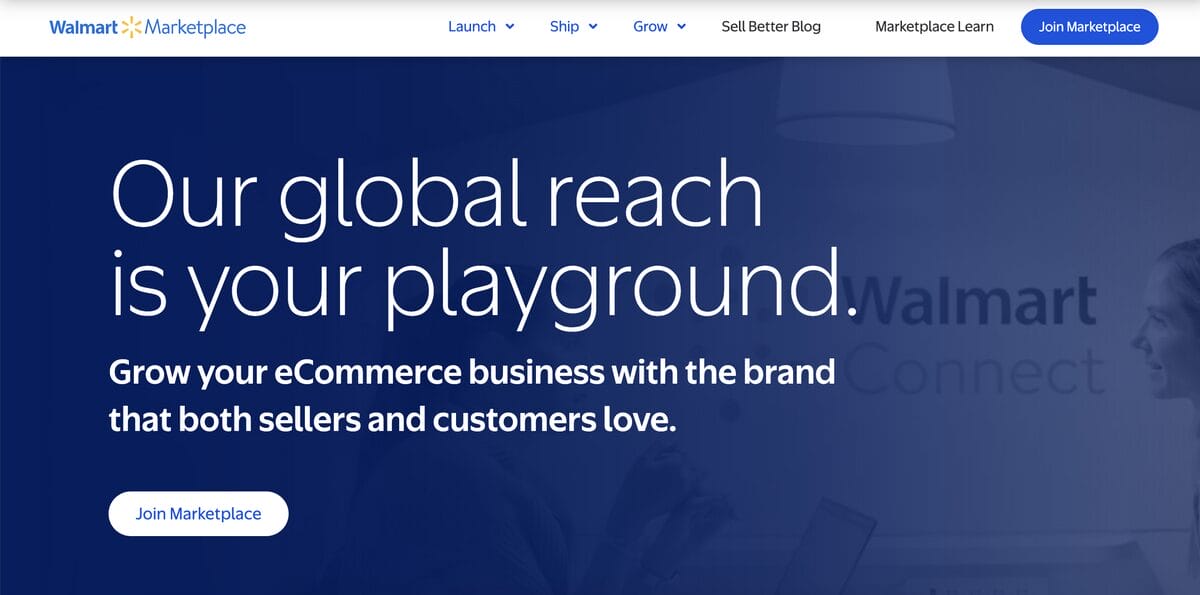
It allows dropshipping from pre-approved suppliers, but not from other retailers. Sellers must register as official Walmart Marketplace partners, meet strict shipping speed and tracking standards, and make sure all orders are branded under their own store, not the supplier’s.
💡 Pro Tip: AutoDS integrates with most dropshipping platforms. Use its automation tools to stay compliant with supplier data accuracy and tracking.
Common Dropshipping Scams (and How to Avoid Them)
Dropshipping gets a bad rep. Not because it’s illegal, but because there are plenty of bad dropshippers who ruin it for everyone else.
Think fake gurus who pretend to give you magic recipes to become a millionaire, shady suppliers who lie in product descriptions, and refund scammers. With these people, it’s easy to fall for traps if you’re just starting out. The good news? Once you know what to watch for, it’s surprisingly easy to stay safe.
Let’s break the three most common dropshipping scams down:
- Misleading “get rich quick” schemes. If someone promises you’ll make $10,000 in a week just by “copying their systems”, newsflash: it’s a scam. They usually involve overpriced courses that deliver nothing but recycled YouTube advice. Legit dropshipping takes time, testing, and strategy. Not magic formulas.
- Fake suppliers and product misrepresentation. Classic. You find what looks like a goldmine supplier. But after a few sales, the products never arrive, or customers receive something that looks from 2012. Always vet your suppliers. You can order a few samples, check reviews, and use trusted platforms like the AutoDS marketplace.
- Credit card chargeback scams and PayPal disputes. This one actually comes from customers, not sellers. Some buyers claim they never received the item when they actually did. Others dispute charges to get free products. Both are classic chargeback scams.
💡 Pro Tip: To protect yourself, always use trackable shipping and upload tracking numbers immediately. AutoDS can help you do this automatically with its order fulfillment feature, which includes tracking number automation, alerts, and even return management.
How to Run a 100% Legal and Legit Dropshipping Business
Now that we’ve gone over what not to do, let’s focus on how to keep your store clean and compliant. Running a legal dropshipping business isn’t complicated. It just means setting things up right from the start and keeping your operations transparent.
Follow these steps, and you’ll be running a legitimate, trustworthy store that customers (and marketplaces) love.
Step 1: Register Your Business Properly
You don’t need a skyscraper office to be legit. But you do need to be officially recognized as a business, even if you’re just working from home.
Register your store as a sole proprietorship, LLC (Limited Liability Company), or equivalent entity in your country, depending on your setup. Quick reminder:
- Sole proprietorship is very simple to arrange, has almost no paperwork, and has fewer costs.
- An LLC is a bit more complex to set up, but it protects your personal assets in the long term if something goes wrong.
Step 2: Work with Verified Suppliers
Your business is only as legit as your suppliers. If the products are the engine of your business, suppliers are the fuel lines. Something gets stuck or goes wrong, and everything falls apart.
Always try to work with the best dropshipping suppliers that meet marketplace standards and ship quality products consistently. AutoDS offers an exclusive marketplace of verified suppliers. It allows you to source freely without worrying about counterfeit goods, poor shipping times, or misleading listings. In other words? It’s all pre-vetted for you.
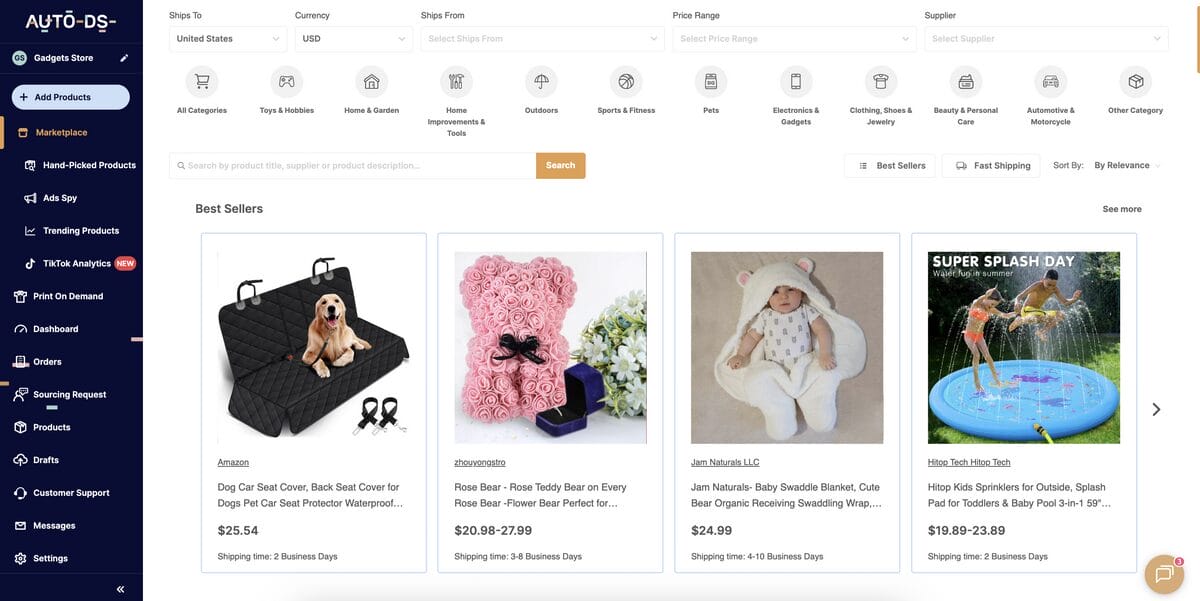
Step 3: Stay Transparent with Customers
The basis of all dropshipping basics: be transparent. No customer likes surprises, unless it’s faster shipping or a free gift. Keep your store honest and your listings accurate:
- Clearly state shipping times, especially for international orders.
- Send out tracking numbers as quickly as possible so they can track their package at all times.
- Avoid overselling or using misleading photos.
- Be upfront about return and refund policies. You can even include it in your listings.
- Create honest listings, with descriptions that don’t overhype the product and images that showcase it in real-life settings.
Transparency builds trust. And, in dropshipping, trust is what keeps customers coming back.
Step 4: Protect Your Brand and Assets
Dropshipping is not just about copying and pasting someone else’s business. It’s about creating your own. Always use copyright-free product images and content. Also, avoid trademarked logos or branded items you don’t have permission to sell.
Also, make sure your website includes the basics: contact information for customer support, privacy policy, terms and conditions, and refund and return policy.
These small details are what make the difference between an amateur store and a professional dropshipping business.
Step 5: Use Automation Tools for Compliance
Even the most responsible seller can make mistakes. You can list a product that suddenly goes out of stock, forget to update prices that have randomly increased, or even type the wrong letter into your customer’s shipping address. Human mistakes happen. The solution? Automation.
Let’s put it this way: automation steps in like your behind-the-scenes assistant. It quietly handles the logistics in an error-free, immediate way.
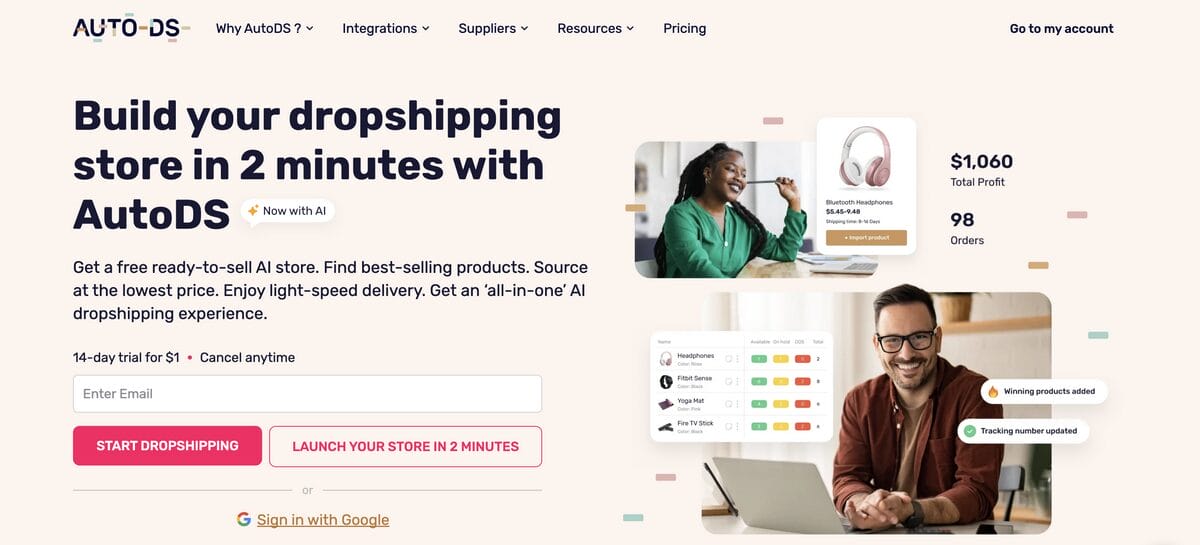
AutoDS, for example, is an all-in-one dropshipping platform that keeps your store compliant by:
- Automatically syncing supplier data. It monitors stock and pricing, reviewing one by one every 60 minutes, to make sure your listings are updated at all times. This way, you’re not selling out-of-stock items or losing profits with underpriced products.
- Generating invoices automatically and immediately, so everything is recorded properly and on time.
- Connecting you with pre-vetted suppliers who comply with selling channels like Amazon, eBay, and Etsy.
🛡 Start your $1 trial today and see how easy it is to stay 100% compliant.
Global Dropshipping Legality by Region (Quick Overview)
Dropshipping is legal almost everywhere. There are only a few countries where dropshipping is restricted:
- Those with international trade sanctions, like North Korea, Iran, Syria, and Cuba
- Some African countries, where it isn’t illegal, but have strict importing rules and payment limitations. For example, Algeria and Ethiopia.
Other than that, dropshipping is all good in the rest of the world. Just make sure to follow local tax, registration, and consumer protection rules. Here’s a quick regional snapshot.
United States
100% legal and straightforward. You’ll just need to register your business, get an EIN for taxes, and follow FTC regulations on fair advertising and refunds. Also, most major marketplaces are US-friendly, with fast shipping and legitimate suppliers.
United Kingdom
Dropshipping in the UK is fully legal and pretty similar to the US requirements. You just have to:
- Register as self-employed or form a Limited Company with HM Revenue & Customs
- Collect and remit VAT once sales exceed £90,000 (2025 threshold).
- Follow the UK Consumer Rights Act for refunds, returns, and fair advertising.
Keep in mind that after Brexit, the UK no longer follows EU VAT rules. Now, you need a separate VAT registration for UK sales. You also need import and export paperwork for goods crossing between the UK and the EU.
📦 Supplier’s Tip: These new custom checks have delayed shipping times a bit and increased costs when shipping to and from the EU. A quick solution? Partner with local UK suppliers, instead of those from the EU.
Europe (European Union)
Dropshipping is also legal in the EU, but it takes consumer protection and tax compliance very seriously. You must follow VAT rules, charging the correct tax based on your customer’s country, guarantee the 14-day return rights, and comply with GDPR rules on privacy and data protection.
Australia
Dropshipping in Australia is totally allowed. You just need an ABN (Australian Business Number) and compliance with the Australian Consumer Law. This covers transparent refunds and product safety standards. Also, if your annual revenue exceeds AUD $75,000, you must register for GST (Goods and Services Tax).
Asia
This region is both a supplier powerhouse and an emerging dropshipping market. In China, India, and Singapore, dropshipping is legal when registered as an official business and compliant with tax regulations (like GST in India).
Bonus points for Singapore and Hong Kong, where tax rates are pretty low and business registration is super easy. This makes them perfect bases for global operations.
Latin America
While still a bit behind the US, Asia, or Europe, Latin America is becoming a popular region for dropshipping. This is especially true in countries like Mexico, Brazil, Argentina, and Chile. To dropship there, you just need to register your business and pay local taxes (like IVA or ICMS).
That said, customs regulations and import duties are strict. A solution? Partner with local suppliers or those experienced in cross-border fulfillment. So, in short, it’s totally legal, but logistics can get tricky.
Africa
Dropshipping is legal in most African countries. The only downside is that regulations and payment infrastructure vary by country. So it all comes down to the specifics of each one.
One of the most solid options is dropshipping in South Africa. There, payment gateways and local courier networks are easily accessible. To get started, you must…
- Register with the Companies and Intellectual Property Commission (CIPC).
- Obtain a VAT number if turnover exceeds ZAR 1 million.
- Just like most countries, you must comply with the Consumer Protection Act. This includes transparent pricing, refund policies, and accurate delivery info.
Frequently Asked Questions
Do I need a business license to start dropshipping?
Yes, most regions require you to have a business licence to start dropshipping. In the US, this means registering your business as an LLC or sole proprietorship once you start selling regularly. It keeps things legal and builds trust with suppliers and platforms.
Is dropshipping from AliExpress or Amazon legal?
Yes, it’s totally legal to dropship from AliExpress or Amazon. That said, while AliExpress is a bit more flexible, Amazon has some strict requirements for dropshipping. You must be the seller of record, meaning you have to take full ownership of your business (like guaranteeing quality, transparency, returns, and customer service). Also, you can’t dropship from other marketplaces or retailers.
Can I use copyrighted images or branded products?
No, you can’t use copyrighted images or branded products when dropshipping. To do so, you need permission. Always use original or supplier-approved images and avoid counterfeit goods.
Do I have to pay taxes on my dropshipping income?
Yes, no matter where you are dropshipping from, you need to register your business and pay taxes. Dropshipping profits are taxable income. You may also need to collect sales tax or VAT based on your region.
What makes a dropshipping store look like a scam?
The biggest red flags that make a dropshipping store look like a scam are fake shipping promises, poor visuals, missing refund information, and overhyped marketing. Be transparent, professional, and customer-friendly.
How can AutoDS help me stay compliant with each platform’s rules?
AutoDS helps you stay compliant with each platform’s rules by automating inventory, pricing, and order tracking, syncing supplier data, and helping you source from verified suppliers. All in all, this reduces policy violations and keeps your business compliant.
Dropshipping Is Legal (If Done Right), AutoDS Helps You Stay Compliant
So, answering the question that brought you here: Is dropshipping legal? Yes, 100%. Just like any other business, it all comes down to how you do it. Bottom line? Be transparent with your customers, register your business, and pay your taxes. Also, follow each platform’s rules and each country’s legal requirements.
And if you want to avoid mistakes or confussions, automation is there to give you a hand. AutoDS helps you stay compliant in dropshipping with accurate supplier data, order tracking, and tax and invoice automation. Plus, it centralizes everything in one single dashboard where you can review order status, manage returns in a couple of clicks, and automate fulfillment.
💡 Pro Tip: Make sure your orders are fulfilled on time. Enable automated order fulfillment on AutoDS to avoid delayed shipments and disputes, making everything run on autopilot.
And if you’re just getting started with dropshipping and have more questions about logistics, legality, and automation, here are a few reads you might find helpful:













